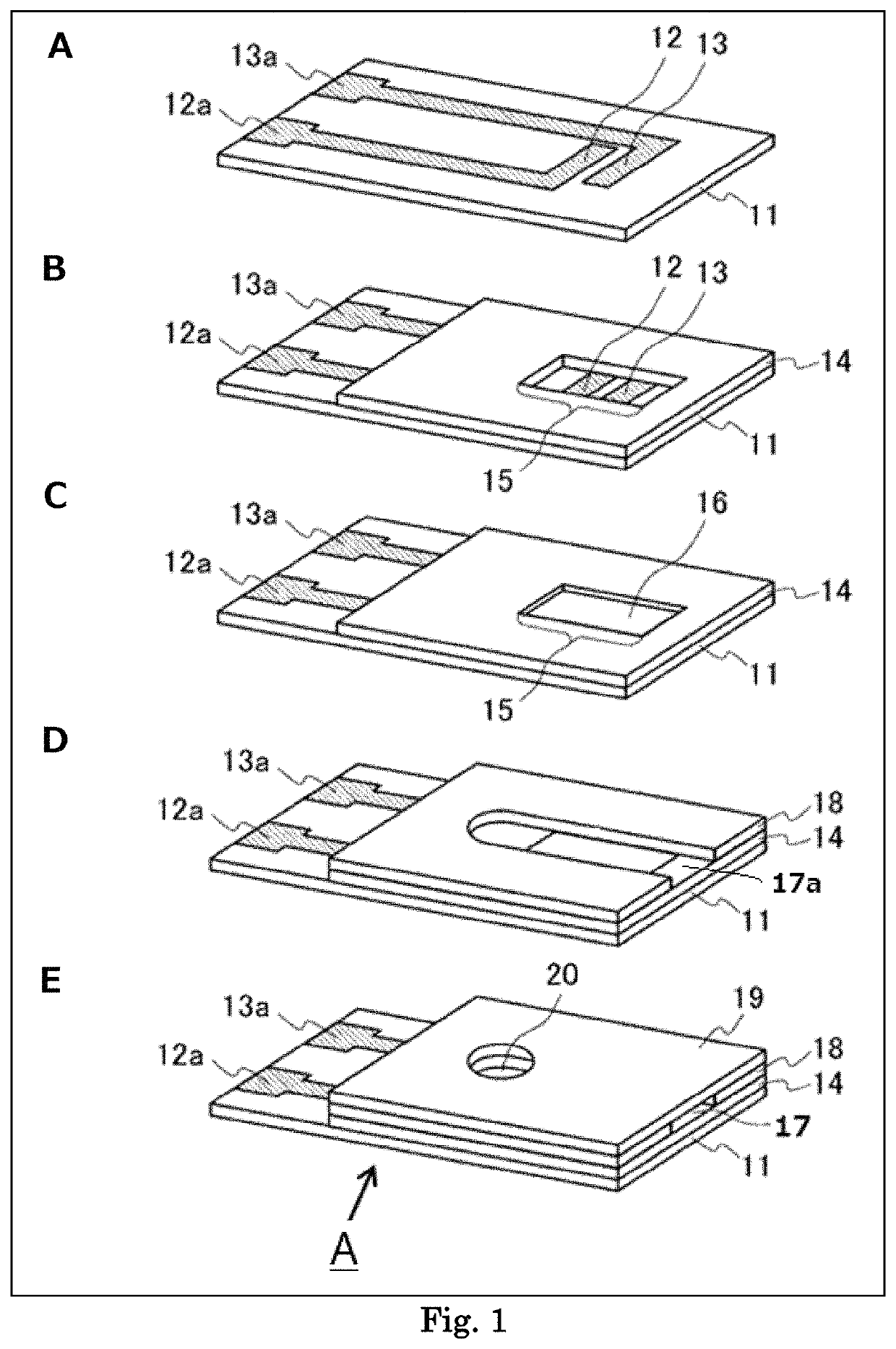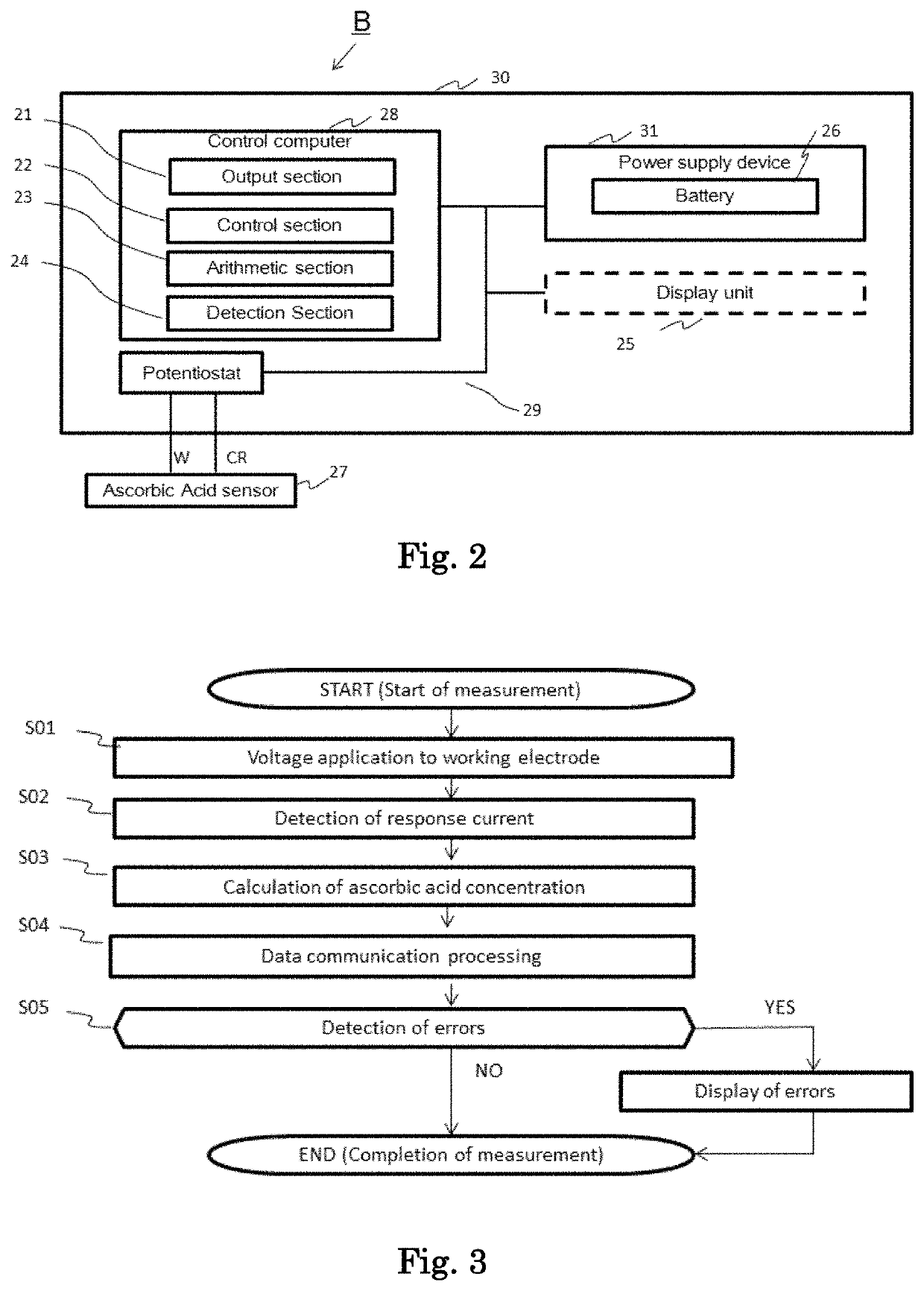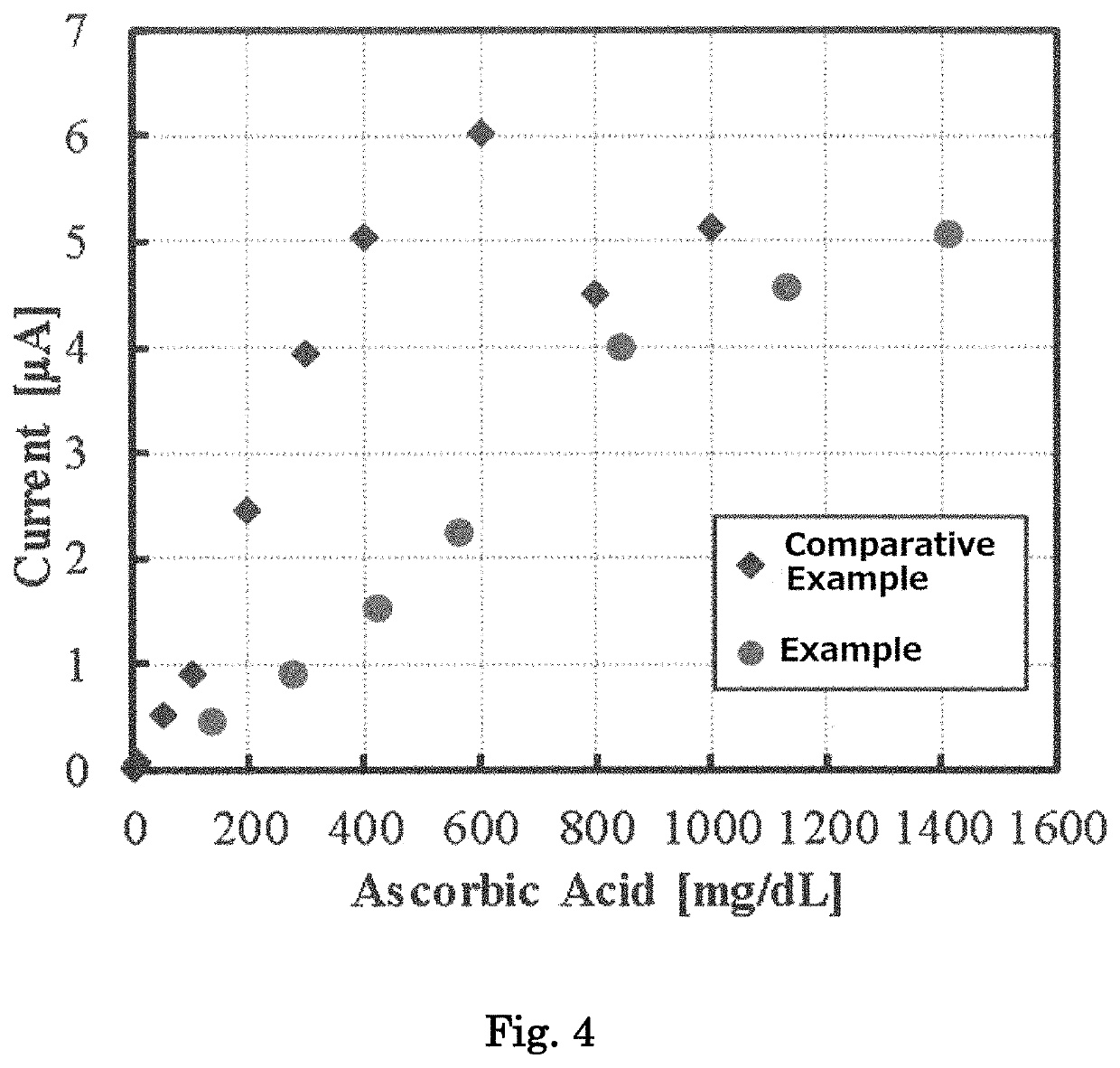Electrode and biosensor for measuring ascorbic acid
a biosensor and ascorbic acid technology, applied in biochemistry apparatus and processes, instruments, material analysis, etc., can solve the problems of inability to real-time measurement, inability to measure real-time, and high equipment costs, so as to improve the linearity and reproducibility of the sensor performance in the high concentration range of ascorbic acid, and improve the accuracy of measurement.
- Summary
- Abstract
- Description
- Claims
- Application Information
AI Technical Summary
Benefits of technology
Problems solved by technology
Method used
Image
Examples
example 1
[0106]As shown in FIG. 1, a biosensor was produced by the following procedures. First, as shown in Panel A, a PET substrate (50 mm long, 6 mm wide, and 250 μm thick) was prepared as an insulating substrate 11 of the ascorbic acid sensor, and on one side of the same a carbon electrode system constituted with a working electrode 12 and a counter electrode 13 having respectively a lead part was formed by screen printing.
[0107]Next, as shown in Panel B, an insulating layer 14 was formed on the electrodes. First, a polyester insulating resin was dissolved in a carbitol acetate solvent up to 75% (wt) to prepare an insulating paste, which was screen-printed on the electrodes. As for the printing conditions, the screen was 300 mesh, the squeegee pressure was 40 kg, and the printed amount was 0.002 mL per 1 cm2 of electrode area. The screen printing was performed except for the detecting unit 15, and the lead parts 12a, 13a. Thereafter, a heat treatment was performed at 155° C. for 20 min to...
example 2
[0122]A biosensor was fabricated in the same manner, except that the amino acid in the biosensor 1 was changed to the amino acid(s) at the content(s) set forth in Table 3, and NPS was changed to the content set forth in Table 3. Using the biosensor, the current values for the respective ascorbic acid-containing whole blood samples were measured in the same manner as described above. The results are shown in FIG. 7. It was found that the linearity was improved, even when an amino acid other than taurine was used. In addition, it was found that as the addition amounts of an amino acid and NPS were increased, good linearity was exhibited up to an ultrahigh concentration range).
[0123]
TABLE 3AdditiveTypeTaurineL-α-AlanineGlycineSerineNPS12.50%———1.19%23.75%———1.19%35.00%———2.38%41.25%1.25%——1.19%52.50%2.50%——2.38%61.25%1.25%——1.79%71.25%1.25%——2.38%8———2.50%1.19%9———3.75%1.19%10———5.00%1.19%112.50%0.63%0.63%—1.19%123.75%0.63%0.63%—1.19%
example 3
[0124]A biosensor was fabricated in the same manner except that NPS in the biosensor 1 was changed to BSA or a saccharide (xylitol, or trehalose). Using the biosensor, the current values for the respective ascorbic acid-containing whole blood samples were measured in the same manner as described above. The results are shown in FIG. 8.
[0125]It was found that good linearity was obtained between the concentrations of ascorbic acid and the response current values even when a saccharide (xylitol, or trehalose) was used together with an amino acid. It was also found that even when BSA was used as a soluble protein, good linearity was obtained between the concentrations of ascorbic acid and the response current values.
PUM
| Property | Measurement | Unit |
|---|---|---|
| concentration | aaaaa | aaaaa |
| surface area | aaaaa | aaaaa |
| molecular weight | aaaaa | aaaaa |
Abstract
Description
Claims
Application Information
 Login to View More
Login to View More - R&D
- Intellectual Property
- Life Sciences
- Materials
- Tech Scout
- Unparalleled Data Quality
- Higher Quality Content
- 60% Fewer Hallucinations
Browse by: Latest US Patents, China's latest patents, Technical Efficacy Thesaurus, Application Domain, Technology Topic, Popular Technical Reports.
© 2025 PatSnap. All rights reserved.Legal|Privacy policy|Modern Slavery Act Transparency Statement|Sitemap|About US| Contact US: help@patsnap.com



